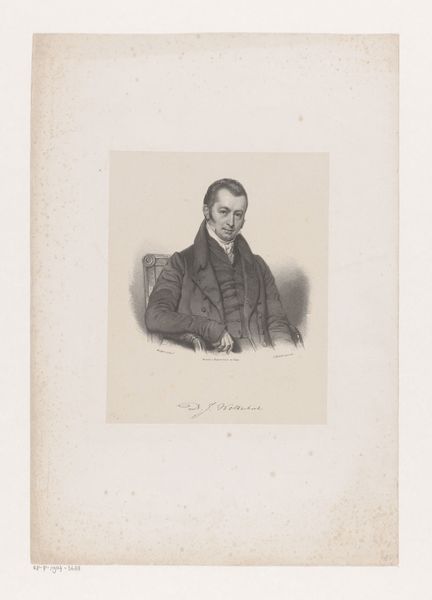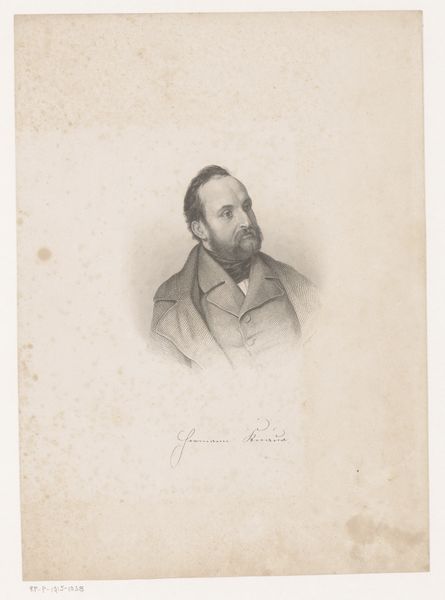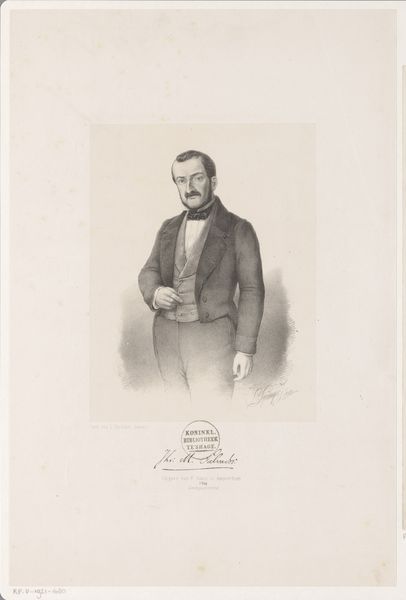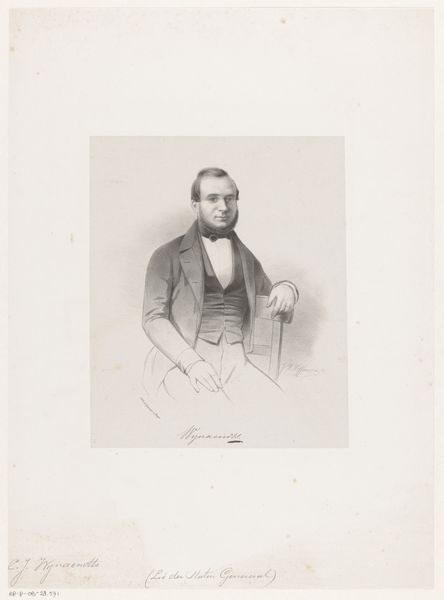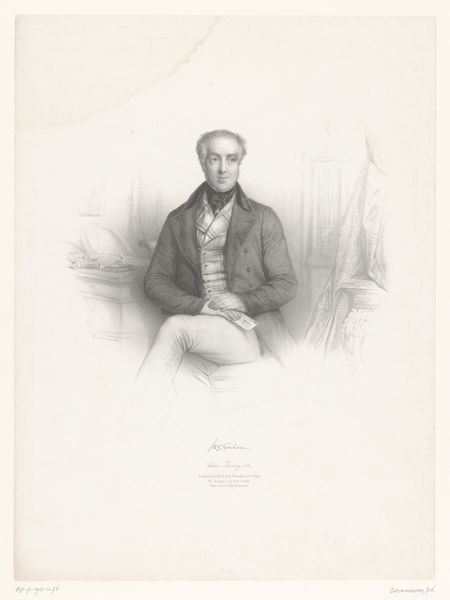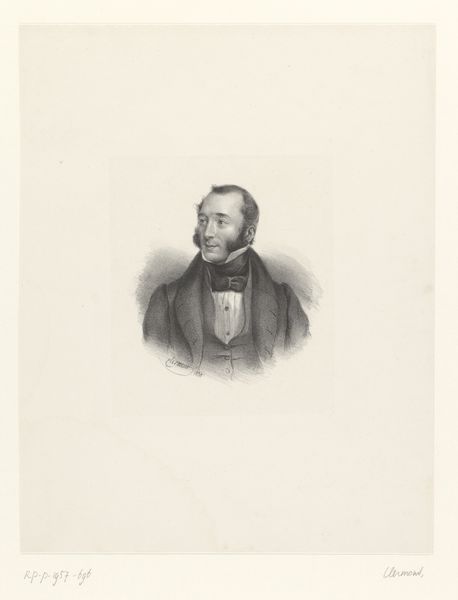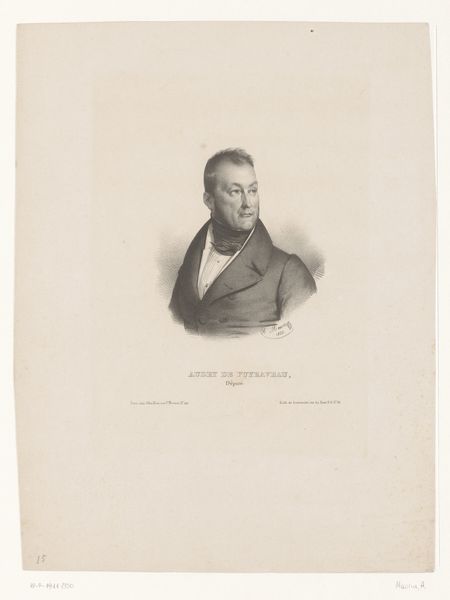
drawing, pencil, graphite
#
portrait
#
pencil drawn
#
drawing
#
pencil sketch
#
pencil drawing
#
pencil
#
graphite
#
pencil work
#
academic-art
Dimensions: height 490 mm, width 469 mm
Copyright: Rijks Museum: Open Domain
This is a portrait of Reverend Jan van Gilse, made by Sybrand Altmann in the 19th century. It is a lithograph, a printmaking technique that relies on the chemical repulsion between oil and water. To make a lithograph, the artist would draw on a flat stone surface with a greasy crayon, then treat the stone with chemicals to fix the image. When the stone is dampened and inked, the ink adheres only to the greasy areas, which can then be printed onto paper. The resulting image has a distinctive texture and tonal range, as you can see here. This printmaking technique allowed for relatively quick and inexpensive reproductions, making images like this portrait accessible to a wider audience. It reflects the increasing industrialization of image-making in the 19th century, where traditional artistic skills were combined with new technologies to meet the demands of a growing market. While it may seem commonplace today, consider the amount of skilled hand labor that went into the production of this portrait.
Comments
No comments
Be the first to comment and join the conversation on the ultimate creative platform.


